Thank-you magamud. This is just an ongoing process. As far as access goes -- just going online is probably as much 'access' as anyone needs -- at this point, anyway. I just can't process what's out there. I don't need more information than is already in the public domain. I just need to learn to constructively process the madness. As bad as my present circumstances are -- I'm probably right where I need to be -- unless I get screwed by the Chinese, the Aliens, and Earth-Changes (no offense to the Chinese and Aliens). I just get the feeling that we MIGHT be dealing with the NWO-Aliens v NEW-AGE Aliens. I get the feeling that NEITHER of them are particularly nice. I get the feeling that we do NOT live in a NICE Universe. I want to believe the best -- but I'm presently thinking the worst. Check this out!
https://www.youtube.com/watch?v=xCajT_JKhfU I'm trying to be neutral toward everyone -- including the bad guys and gals -- which probably includes just about everyone.
One thing that REALLY bothers me is Human Sacrifice. This goes way, way back in history - and it continues to this very day. What the hell is going on? It is a dominant theme in the Bible and in Christianity. It is present in various 'Pagan' religions. It is used in Satanic Rituals - some of which are performed behind locked church doors. What the hell is going on? Christ dying on the cross is a Human Sacrifice. The Catholic Mass (as beautiful as I find it to be) is an unbloody human sacrifice - each and every time it is performed. What does this say about the Deity who is apparently being appeased? According to Bill Cooper - the John F. Kennedy assassination was a human sacrifice - indeed, the Sacrificed King.
https://www.youtube.com/watch?v=IL9qMgTcCzE&feature=related 9/11 was supposed to be a ritual sacrifice. Horus mythology includes human sacrifice. People, such as Alex Collier, say that Reptilians eat our children. What the hell is going on? This world is really, really creeping me out. It is so beautiful - and the human body is so wonderful - but the historical and contemporary murder, mayhem, and carnage is indescribably reprehensible. What the hell is going on?
http://en.wikipedia.org/wiki/Human_sacrificeHuman sacrifice is the act of killing one or more human beings as part of a religious ritual (ritual killing). Its typology closely parallels the various practices of ritual slaughter of animals (animal sacrifice) and of religious sacrifice in general. Human sacrifice has been practised in various cultures throughout history. Victims were typically ritually killed in a manner that was supposed to please or appease gods, spirits or the deceased, for example as a propitiatory offering, or as a retainer sacrifice when the King's servants are killed in order for them to continue to serve their master in the next life. Closely related practices found in some tribal societies are cannibalism and headhunting. By the Iron Age, with the associated developments in religion (the Axial Age), human sacrifice was becoming less common throughout the Old World, and came to be widely looked down upon as barbaric already in pre-modern times (Classical Antiquity). Blood libel is a false charge of ritual killing.
Even if not ostensibly connected with religion, infliction of capital punishment is often highly ritualised and thus difficult to distinguish from human sacrifice. Death by burning historically has aspects of both human sacrifice (Wicker Man, Tophet) and capital punishment (Brazen bull, Tamar, tunica molesta). Detractors of the death penalty may consider all forms of capital punishment as secularised variants of human sacrifice.[1] Similarly, lynching, pogroms and genocides are sometimes interpreted as human sacrifice following Theodor W. Adorno.[2]
In modern times, even the once ubiquitous practice of animal sacrifice has virtually disappeared from all major religions (or has been re-cast in terms of ritual slaughter), and human sacrifice has become extremely rare. Most religions condemn the practice, and present-day secular laws treat it as murder. In the context of a society which condemns human sacrifice, the term ritual murder is used.
Similar killings for the purpose of ritual are still occasionally seen, with reports from the 2000s from Sub-Saharan Africa (muti killings), but also isolated cases in the immigrant African diaspora in Europe.[3][4] In India, Sati, the immolation of a widow on her husband's funeral pyre, continued well into the 19th century, but in current practice has become very rare.
The idea of human sacrifice has its roots in deep prehistory,[5] in the evolution of human behaviour. Mythologically, it is closely connected, or even fundamentally identical with animal sacrifice. Walter Burkert has argued for such a fundamental identity of animal and human sacrifice in the connection of a hunting hypothesis which traces the emergence of human religious behaviour to the beginning of behavioural modernity in the Upper Paleolithic (roughly 50,000 years ago).
There has been a lot of debate on the primacy of myth vs. ritual, and the presence of a myth of human sacrifice should not be taken as necessarily implying the historical existence of the actual practice: human sacrifice may be taken as the re-enactment of an older myth, or conversely a myth can be taken as a memory of an earlier practice of human sacrifice. Theistic rationalisations of human sacrifice may involve the idea of offering to deities as payment for favourable interventions in an event of special importance, to forestall unfavourable events, or to purchase disclosures about the physical world.[citation needed]
Human sacrifice has been practised on a number of different occasions and in many different cultures. The various rationales behind human sacrifice are the same that motivate religious sacrifice in general. Human sacrifice is intended to bring good fortune and to pacify the gods, for example in the context of the dedication of a completed building like a temple or bridge. There is a Chinese legend that there are thousands of people entombed in the Great Wall of China. In ancient Japan, legends talk about Hitobashira ("human pillar"), in which maidens were buried alive at the base or near some constructions as a prayer to ensure the buildings against disasters or enemy attacks.[6] For the re-consecration of Great Pyramid of Tenochtitlan in 1487, the Aztecs reported that they killed about 80,400 prisoners over the course of four days. According to Ross Hassig, author of Aztec Warfare, "between 10,000 and 80,400 persons" were sacrificed in the ceremony.[7]
Human sacrifice can also have the intention of winning the gods' favour in warfare. In Homeric legend, Iphigeneia was to be sacrificed by her father Agamemnon for success in the Trojan War. According to the Bible, Jephthah sacrificed his daughter after making a vow (Judges 11).[8][9] Another motivation for human sacrifice is burial: in some notions of an afterlife, the deceased will benefit from victims killed at his funeral. Mongols, Scythians, early Egyptians and various Mesoamerican chiefs could take most of their household, including servants and concubines, with them to the next world. This is sometimes called a "retainer sacrifice", as the leader's retainers would be sacrificed along with their master, so that they could continue to serve him in the afterlife.
Another purpose is divination from the body parts of the victim. According to Strabo, Celts stabbed a victim with a sword and divined the future from his death spasms.[10]
Headhunting is the practice of taking the head of a killed adversary, for ceremonial or magical purposes, or for reasons of prestige. It was found in many pre-modern tribal societies.
Human sacrifice may be a ritual practised in a stable society, and may even be conductive to enhance societal bonds (see Sociology of religion), both by creating a bond unifying the sacrificing community, and in combining human sacrifice and capital punishment, by removing individuals that have a negative effect on societal stability (criminals, religious heretics, foreign slaves or prisoners of war). But outside of civil religion, human sacrifice may also result in outbursts of "blood frenzy" and mass killings that destabilise society. Thus, the Thuggee cult that plagued India was devoted to Kali, the goddess of death and destruction.[11][12] According to the Guinness Book of Records the Thuggee cult was responsible for approximately 2 million deaths. The bursts of capital punishment during European witch-hunts, or during the French Revolutionary Reign of Terror show similar sociological patterns (see also Moral panic).
Many cultures show traces of prehistoric human sacrifice in their mythologies, but have ceased to practise them before the onset of historical records. The story of Abraham and Isaac (Genesis 22) is an example of a myth explaining the abolition of human sacrifice. Similarly, the Vedic Purushamedha, literally "human sacrifice", is already a purely symbolic act in its earliest attestation. According to Pliny the Elder, human sacrifice in Ancient Rome was abolished by a senatorial decree in 97 BCE, although by this time the practice had already become so rare that the decree was mostly a symbolic act. Human sacrifice once abolished is typically replaced by either animal sacrifice, or by the "mock-sacrifice" of effigies, such as the Argei in ancient Rome.
There may be evidence of retainer sacrifice in the early dynastic period at Abydos, when on the death of a King he would be accompanied with servants, and possibly high officials, who would continue to serve him in eternal life. The skeletons found show no obvious signs of trauma, leading to speculation that the giving up of life to serve the King may have been a voluntary act, possibly carried out in a drug induced state. At about 2800 BCE any possible evidence of such practices disappeared, though echoes are perhaps to be seen in the burial of statues of servants in Old Kingdom tombs.[13][14]
Retainer sacrifice was practised within the royal tombs of ancient Mesopotamia. Courtiers, guards, musicians, handmaidens and grooms died, presumed to have taken poison.[15][16] A new examination of skulls from the royal cemetery at Ur, discovered in Iraq almost a century ago, appears to support a more grisly interpretation than before of human sacrifices associated with elite burials in ancient Mesopotamia, archaeologists say. Palace attendants, as part of royal mortuary ritual, were not dosed with poison to meet a rather serene death. Instead, a sharp instrument, a pike perhaps, was driven into their heads.[17]
References in the Bible point to an awareness of human sacrifice in the history of ancient near-eastern practice. During a battle with the Israelites the king of Moab gives his firstborn son and heir as a whole burnt offering (olah, as used of the Temple sacrifice) (2 Kings 3:27).[18]
In Genesis 22 as well as the Qur'an, there is a story about Abraham's binding of Isaac, although in the Qur'an the name of the son is not mentioned and assumed to be Ismail. In the Bible's version of the story, God tests Abraham by asking him to present his son, Isaac, as a sacrifice on Mount Moriah. No reason is given within the text. Abraham agrees to this command without arguing. The story ends with an angel stopping Abraham at the last minute and making Isaac's sacrifice unnecessary by providing a ram, caught in some nearby bushes, to be sacrificed instead. Many Bible scholars have suggested this story's origin was a remembrance of an era when human sacrifice was abolished in favour of animal sacrifice.[19][20]
Another instance of human sacrifice mentioned in the Bible is the sacrifice of Jephthah's daughter in Judges 11. Jephthah vows to sacrifice to God whatsoever comes to greet him at the door when he returns home if he is victorious. The vow is stated in Judges 11:31 as "Then it shall be, that whatsoever cometh forth of the doors of my house to meet me, when I return in peace from the children of Ammon, shall surely be the Lord's, and I will offer it up for a burnt offering." When he returns from battle, his virgin daughter runs out to greet him. According to the commentators of the rabbinic Jewish tradition, Jepthah's daughter was not sacrificed, but was forbidden to marry and remained a spinster her entire life, fulfilling the vow that she would be devoted to the Lord.[21]
According to Roman and Greek sources, Phoenicians and Carthaginians sacrificed infants to their gods. The bones of numerous infants have been found in Carthaginian archaeological sites in modern times but the subject of child sacrifice is controversial.[22] In a single child cemetery called the Tophet by archaeologists, an estimated 20,000 urns were deposited.[23]
Plutarch (ca. 46–120 CE) mentions the practice, as do Tertullian, Orosius, Diodorus Siculus and Philo. Livy and Polybius do not. The Bible asserts that children were sacrificed at a place called the Tophet ("roasting place") to the god Moloch. According to Diodorus Siculus' account of the Carthagians:[24]
“ There was in their city a bronze image of Cronus extending its hands, palms up and sloping toward the ground, so that each of the children when placed thereon rolled down and fell into a sort of gaping pit filled with fire. ”
Plutarch, however claims that the children were already dead at the time, having been killed by their parents, whose consent—as well as that of the children—was required; Tertullian explains the acquiescence of the children as a product of their youthful trustfulness.[24]
The accuracy of such stories is disputed by some modern historians and archaeologists.[25]
There is archaeological evidence of human sacrifice in Neolithic to Eneolithic Europe. Retainer sacrifices seem to have been common in early Indo-European religion. For example, the Luhansk sacrificial site shows evidence of human sacrifice in the Yamna culture.
Allusions to human sacrifice are found in classical mythology. The deus ex machina salvation in some versions of Iphigeneia (who was about to be sacrificed by her father Agamemnon) and her replacement with a deer by the goddess Artemis, may be a vestigial memory of the abandonment and discrediting of the practice of human sacrifice among the Greeks in favour of animal sacrifice. Many scholars have suggested a possible analogy with the story of Isaac's attempted sacrifice by his father Abraham in the Bible, which was also stopped at the last minute (though it had first been encouraged) by divine intervention.
The Romans practised various forms of human sacrifice; from Etruscans (or, according to other sources, Sabellians), they adopted the original form of gladiatorial combat where the victim was slain in a ritual battle. During the early republic, criminals who had broken their oaths or defrauded others were sometimes "given to the gods" (that is, executed as a human sacrifice). The Rex Nemorensis was an escaped slave who became priest of the goddess Diana at Nemi by killing his predecessor. Prisoners of war were buried alive as offerings to Manes and Di Inferi (gods of the underworld). Archaeologists have found sacrificial victims buried in building foundations. Ordinarily, deceased Romans were cremated rather than buried. Captured enemy leaders, after the victorious general's triumph, would be ritually strangled in front of a statue of Mars, the war god. Dionysius of Halicarnassus[26] refers to a sacrifice of Argei in the Vestal ritual that might have originally included sacrifice of old men. According to Pliny the Elder, human sacrifice was formally banned during the consulship of Publius Licinius Crassus and Gnaeus Cornelius Lentulus in 97 BCE, although by this time it was so rare that the decree was largely symbolic.[27] Most of the rituals turned to animal sacrifice like taurobolium or became merely symbolic. A Roman general might bury a statue of his likeness to thank the gods for victory. However, activities with a ritual origin and similarities to human sacrifice, such as the gladiatorial games and some forms of execution, continued for many years, and grew in popularity.
According to Roman sources, Celtic Druids engaged extensively in human sacrifice.[28] According to Julius Caesar, the slaves and dependents of Gauls of rank would be burnt along with the body of their master as part of his funerary rites.[29] He also describes how they built wicker figures that were filled with living humans and then burned.[30] It is known that druids at least supervised sacrifices of some kind. According to Cassius Dio, Boudica's forces impaled Roman captives during her rebellion against the Roman occupation, to the accompaniment of revelry and sacrifices in the sacred groves of Andate.[31] Different gods reportedly required different kinds of sacrifices. Victims meant for Esus were hanged, those meant for Taranis immolated and those for Teutates drowned. Some, like the Lindow Man, may have gone to their deaths willingly.
Archaeological evidence from the British Isles seems to indicate that human sacrifice may have been practised, over times long pre-dating any contact with Rome. Human remains have been found at the foundations of structures from the Neolithic time to the Roman era, with injuries and in positions that argue for their being foundation sacrifices.[citation needed]
Skeletons belonging to as many as 150 people and dating back to about the time of the Roman conquest were discovered in Alveston, England. Druids may have killed the victims in a single event.[32]
Ritualised decapitation survives in the archaeological record such as the example of 12 headless corpses at the French late Iron Age sanctuary of Gournay-sur-Aronde.[33]
Reconstruction of Windeby Boy, found in Schleswig, Germany. The evidence suggests that the boy had been murdered, possibly as a sacrifice.Human sacrifice was not a particularly common occurrence among the Germanic peoples, being resorted to in exceptional situations arising from crises of an environmental (crop failure, drought, famine) or social (war) nature, often thought to derive at least in part from the failure of the king to establish and/or maintain prosperity and peace (árs ok friðar) in the lands entrusted to him.[34] In later Scandinavian practice, human sacrifice appears to have become more institutionalised, and was repeated as part of a larger sacrifice on a periodic basis (according to Adam of Bremen every nine years).[35]
Evidence of Germanic practices of human sacrifice predating the Viking Age depend on archaeology and on a few scattered accounts in Greco-Roman ethnography. For example, Tacitus reports Germanic human sacrifice to (what he interprets as) Mercury, and to Isis specifically among the Suebians. Jordanes reports how the Goths sacrificed prisoners of war to Mars, suspending the severed arms of the victims from the branches of trees.
By the 8th century, Germanic paganism had become restricted to Scandinavia. One account by Ahmad ibn Fadlan as part of his account of an embassy to the Volga Bulgars in 921 claims that Norse warriors were sometimes buried with enslaved women with the belief that these women would become their wives in Valhalla. In his description of the funeral of a Scandinavian chieftain, a slave volunteers to die with a Norseman. After ten days of festivities, she is stabbed to death by an old woman, a sort of priestess who is referred to as Völva or "Angel of Death", and burnt together with the deceased in his boat. This practice is evidenced archaeologically, with many male warrior burials (such as the ship burial at Balladoole on the Isle of Man, or that at Oseberg in Norway[36]) also containing female remains with signs of trauma.
Adam von Bremen recorded human sacrifices to Odin in 11th-century Sweden, at the Temple at Uppsala, a tradition which is confirmed by Gesta Danorum and the Norse sagas. According to the Ynglinga saga, king Domalde was sacrificed there in the hope of bringing greater future harvests and the total domination of all future wars. The same saga also relates that Domalde's descendant king Aun sacrificed nine of his own sons to Odin in exchange for longer life, until the Swedes stopped him from sacrificing his last son, Egil.
Heidrek in the Hervarar saga agrees to the sacrifice of his son in exchange for the command over a fourth of the men of Reidgotaland. With these, he seizes the entire kingdom and prevents the sacrifice of his son, dedicating those fallen in his rebellion to Odin instead.
According to the Russian Primary Chronicle, prisoners of war were sacrificed to Perun, the Slavic god of war. Leo the Deacon mentions prisoner sacrifice by Sviatoslav during the Russo-Byzantine War. The last known sacrifice occurred in 978; the victims were a young Christian named Ioann and his father, Theodor, who tried to prevent the sacrifice. Theodor and Ioann were later glorified (canonised) as Christian martyrs. Sacrifices to pagan gods, along with paganism itself, were banned after the Baptism of Rus by Prince Vladimir I in the 980s.
The ancient Chinese are known to have made sacrifices of young men and women to river deities, and to have buried slaves alive with their owners upon death as part of a funeral service. This was especially prevalent during the Shang and Zhou Dynasties. During the Warring States period, Ximen Bao of Wei demonstrated to the villagers that sacrifice to river deities was actually a ploy by crooked priests to pocket money.[37] In Chinese lore, Ximen Bao is regarded as a folk hero who pointed out the absurdity of human sacrifice.
The sacrifice of a high-ranking male's slaves, concubines or servants upon his death (called Xun Zang 殉葬 or more specifically Sheng Xun 生殉) was a more common form. The stated purpose was to provide companionship for the dead in the afterlife. In earlier times the victims were either killed or buried alive, while later they were usually forced to commit suicide.
Funeral human sacrifice was abolished by the Qin Dynasty in 384 BCE.[citation needed][dubious – discuss] Afterwards it became relatively rare throughout the central parts of China. However, the Hongwu Emperor of the Ming Dynasty revived it in 1395 when his second son died and two of the prince's concubines were sacrificed. In 1464, the Zhengtong Emperor in his will forbade the practice for Ming emperors and princes.
Human sacrifice was also practised by the Manchus. Following Emperor Nurhaci's death, his wife, Lady Abahai, and his two lesser consorts committed suicide. During the Qing Dynasty, sacrifice of slaves was banned by Emperor Kangxi in 1673.
Human sacrifice, including cannibalism, was doubtlessly practiced in Tibet prior to the arrival of Buddhism in the 7th century.[38]
The prevalence of human sacrifice in medieval Buddhist Tibet is less clear. The Lamas, as professing Buddhists, could not condone blood sacrifices, and they replaced the human victims with effigies made from dough. This replacement of human victims with effigies is attributed to Padmasambhava, a Tibetan saint of the mid 8th century, in Tibetan tradition.[citation needed]
Nevertheless, there is some evidence that outside of lamaism, there were practices of tantric human sacrifice which survived throughout the medieval period, and possibly into modern times. The 15th-century Blue Annals, a seminal document of Tibetan Buddhism, reports upon how in Tibet the so-called "18 robber-monks" slaughtered men and women for their tantric ceremonies.[39] Such practices of human sacrifice as there was in medieval Tibet was mostly replaced by animal sacrifice, or the self-infliction of wounds in religious ritual, by the 20th century[citation needed]. A systematic survey of evidence for human sacrifice in 20th-century Tibet turns up three instances:
a British traveller in 1915 was told that in previous times, babies had been sacrificed at a Gyantse monastery.
Charles Alfred Bell reports the finding of the remains of an eight-year-old boy and a girl of the same age in stupa on the Bhutan-Tibet border in which were apparently ritually killed.[40] American anthropologist Robert Ekvall in the 1950s reported some instances of human sacrifice in remote areas of the Himalayas.[41] Based on this evidence, Grunfeld (1996) concludes that it cannot be ruled out that isolated instances of human sacrifice did survive in remote areas of Tibet until the mid 20th century, but they must have been rare enough to have left no more traces than the evidence cited above.[42]
The earliest evidence for human sacrifice in the Indian subcontinent dates back to the Bronze Age Indus Valley Civilization. An Indus seal from Harappa depicts an upside-down nude female figure with legs outspread and a plant issuing from the womb. The reverse side of the seal depicts a man holding a sickle and a woman seated on the ground in a posture of prayer. Many scholars interpret this scene as a human sacrifice in honor of the Mother-Goddess.[43][44][45][46]
Regarding possible Vedic mention of human sacrifice, the prevailing 19th-century view, associated above all with Henry Colebrooke, was that human sacrifice had little scriptural warrant, and did not actually take place. Those verses which referred to purushamedha were meant to be read symbolically[47] or as a "priestly fantasy". However, Rajendralal Mitra published a defence of the thesis that human sacrifice, as had been practised in Bengal, was a continuation of traditions dating back to Vedic periods.[48] Hermann Oldenberg held to Colebrooke's view; but Jan Gonda underlined its disputed status.
Human and animal sacrifice became less common during the post-Vedic period, as ahimsa (non-violence) became part of mainstream religious thought. This may correspond to the impact of Sramanic religions such as Buddhism and Jainism. The Chandogya Upanishad (3.17.4) includes ahimsa in its list of virtues.[47]
It was agreed even by Colebrooke, however, that by the Puranic period—at least at the time of the writing of the Kalika-Purana, human sacrifice was accepted. The Kalika Purana was composed in Northeast India in the 11th century. The text states that blood sacrifice is only permitted when the country is in danger and war is expected. According to the text, the performer of a sacrifice will obtain victory over his enemies.[47] In the medieval period, it became increasingly common. In the 7th century, Banabhatta, in a description of the dedication of a temple of Chandika, describes a series of human sacrifices; similarly, in the 9th century, Haribhadra describes the sacrifices to Chandika in Orissa.[49] It was "more common" in the Southern parts of India.In the town of Kuknur in North karnataka there exists a ancient Kali temple,built around the 8-9th century AD,which has a history of human sacrifices.[49]
Human sacrifices were carried out in connection with the worship of Shakti until approximately the early modern period, and in Bengal perhaps as late as the early 19th century.[50] Although not accepted by larger section of Hindu culture, certain tantric cults performed human sacrifice until around the same time, both actual and symbolic; it was a highly ritualised act, and on occasion took many months to complete.[50]
Verse 19 of the Karpuradistotram (Hymn to Kali) lists humans as one of the species that are acceptable for sacrifice to the goddess. However, in 1922, Sir John George Woodroffe published a commentary on the Karpuradistotram by the Kaula commentator Swami Vimalananda. In it, he writes that the sacrificial animals listed in verse 19 are merely symbols for the six enemies, with "man" representing pride. He also states that the age of material sacrifice had long since passed away.[51]
Ceremony of burning a Hindu widow.The Khonds, an aboriginal tribe of India, inhabiting the tributary states of Orissa and Andhra Pradesh, became notorious, on the British occupation of their district about 1835, from the prevalence and cruelty of the human sacrifices they practised.[52]
The Deori community has a notable culture and tradition which is a hidden treasure for the sociologists. The Deoris represent the class “priest”-a section of the whole Chutia community (now in Assam, India). In the first two decades of 13th century, before arrival of the Ahom, Name SADIYA. Deori's use to make a Narbali (human sacrifice) in terms to win the war, battle and to prevent the villagers from the evil atmosphere like floods, drought etc. This practice make them pure owing to satisfy the supreme Goddess. Only the class of Patorganya people were eligible for sacrificing. Ref. [15]
The practice of Sati (सती) in some Hindu communities, whereby a widow would immolate herself on her husband's funeral pyre, continued well into the 19th century. Believed to guarantee the couple's salvation and reunion in the afterlife, it may be seen as a form of retainer sacrifice. India's Commission of Sati (Prevention) Act (1829)[53] was designed to finally suppress it. There are no reliable figures for the numbers who died by sati across the country. A local indication of the numbers is given in the records kept by the Bengal Presidency of the British East India Company. The total figure of known occurrences for the period 1813 to 1828 is 8,135.[54]
In Ancient Hawaii, a luakini temple, or luakini heiau, was a Native Hawaiian sacred place where human and animal blood sacrifices were offered. Kauwa, the outcast or slave class, were often used as human sacrifices at the luakini heiau. They are believed to have been war captives, or the descendents of war captives. They were not the only sacrifices; law-breakers of all castes or defeated political opponents were also acceptable as victims.[55][56]
Some of the most famous forms of ancient human sacrifice were performed by various Pre-Columbian civilizations in the Americas[57] that included the sacrifice of prisoners as well as voluntary sacrifice. Friar Marcus de Nica (1539) writing of the "Chichimecas": that from time to time "they of this valley cast lots whose luck (honour) it shall be to be sacrificed, and they make him great cheer, on whom the lot falls, and with great joy they crown him with flowers upon a bed prepared in the said ditch all full of flowers and sweet herbs, on which they lay him along, and lay great store of dry wood on both sides of him, and set it on fire on either part, and so he dies" and "that the victim took great pleasure" in being sacrificed.[58]
The Mixtec players of the Mesoamerican ballgame were sacrificed when the game was used to resolve a dispute between cities. The rulers would play a game instead of going to battle. The losing ruler would be sacrificed. The ruler "Eight Deer" was considered a great ball player and won several cities this way, until he lost a ball game and was sacrificed.[citation needed]
The Maya held the belief that cenotes or limestone sinkholes were portals to the underworld and sacrificed human beings and tossed them down the cenote to please the water god Chaac. The most notable example of this is the "Sacred Cenote" at Chichén Itzá where extensive excavations have recovered the remains of 42 individuals, half of them under twenty years old.
Only in the Post-Classic era did this practice become as frequent as in central Mexico.[59] In the Post-Classic period, the victims and the altar are represented as daubed in a hue now known as Maya Blue, obtained from the añil plant and the clay mineral palygorskite.[60]
The Aztecs were particularly noted for practicing human sacrifice on a large scale; an offering to Huitzilopochtli would be made to restore the blood he lost, as the sun was engaged in a daily battle. Human sacrifices would prevent the end of the world that could happen on each cycle of 52 years. In the 1487 re-consecration of the Great Pyramid of Tenochtitlan some estimate that 80,400 prisoners were sacrificed[61][62] though numbers are difficult to quantify as all obtainable Aztec texts were destroyed by Christian missionaries during the period 1528–1548.[63]
According to Ross Hassig, author of Aztec Warfare, "between 10,000 and 80,400 people" were sacrificed in the ceremony. The old reports of numbers sacrificed for special feasts have been described as "unbelievably high" by some authors[63] and that on cautious reckoning, based on reliable evidence, the numbers would have been in the hundreds for yearly feasts in Tenochtitlan.[63] The real number of sacrificed victims during the 1487 consecration is unknown.
Michael Harner, in his 1997 article The Enigma of Aztec Sacrifice, estimates the number of persons sacrificed in central Mexico in the 15th century as high as 250,000 per year. Fernando de Alva Cortés Ixtlilxochitl, a Mexica descendant and the author of Codex Ixtlilxochitl, claimed that one in five children of the Mexica subjects was killed annually. Victor Davis Hanson argues that an estimate by Carlos Zumárraga of 20,000 per annum is more plausible. Other scholars believe that, since the Aztecs always tried to intimidate their enemies, it is more likely that they could have inflated the number as a propaganda tool.[64][65]
Tlaloc would require weeping boys in the first months of the Aztec calendar to be ritually murdered.
Aztec burial of a sacrificed child at Tlatelolco.Sacrifices to Xipe Totec were bound to a post and shot full of arrows. The dead victim would be skinned and a priest would use the skin. Earth mother Teteoinnan required flayed female victims.
In common with all known Bronze Age civilisations the Incas practised human sacrifice, especially at great festivals or royal funerals where retainers died to accompany the dead into the next life.[66] The Moche of Northern Peru sacrificed teenagers en masse, as archaeologist Steve Bourget found when he uncovered the bones of 42 male adolescents in 1995.[67]
The study of the images seen in Moche art has enabled researchers to reconstruct the culture's most important ceremonial sequence, which began with ritual combat and culminated in the sacrifice of those defeated in battle. Dressed in fine clothes and adornments, armed warriors faced each other in ritual combat. In this hand-to-hand encounter the aim was to remove the opponent's headdress rather than kill him. The object of the combat was the provision of victims for sacrifice. The vanquished were stripped and bound, after which they were led in procession to the place of sacrifice. The captives are portrayed as strong and sexually potent. In the temple, the priests and priestesses would prepare the victims for sacrifice. The sacrificial methods employed varied, but at least one of the victims would be bled to death. His blood was offered to the principal deities in order to please and placate them.[68]
The Inca of Peru also made human sacrifices. As many as 4,000 servants, court officials, favorites, and concubines were killed upon the death of the Inca Huayna Capac in 1527, for example.[69] A number of mummies of sacrificed children have been recovered in the Inca regions of South America, an ancient practice known as capacocha. The Incas performed child sacrifices during or after important events, such as the death of the Sapa Inca (emperor) or during a famine.[67]
The Pawnee practised an annual Morning Star Ceremony, which included the sacrifice of a young girl. Though the ritual continued, the sacrifice was discontinued in the 19th century.[70] The Iroquois are said to have occasionally sent a maiden to the Great Spirit.[71]
The Southern Cult or Mound Builders, of the Southeastern United States may have also practised human sacrifice, as some artifacts have been interpreted as depicting such acts.[72] Early European explorers reported witnessing mass human sacrifices.[73]
The torture of war captives by the tribes of the Eastern Woodlands cultural region also seems to have had sacrificial motivations. See Captives in American Indian Wars
Human sacrifice was common in West African states up to and during the 19th century. The Annual customs of Dahomey was the most notorious example, but sacrifices were carried out all along the West African coast and further inland. Sacrifices were particularly common after the death of a King or Queen, and there are many recorded cases of hundreds or even thousands of slaves being sacrificed at such events. Sacrifices were particularly common in Dahomey, in the Benin Empire, in what is now Ghana, and in the small independent states in what is now southern Nigeria. When a ruler in Dahomey died hundreds, sometimes even thousands, of prisoners would be slain. In one of these ceremonies in 1727, as many as 4,000 were reported killed.[74] In addition Dahomey had an Annual Custom during which 500 prisoners were sacrificed.[75]
In the northern parts of West Africa, human sacrifice had become rare early as Islam became more established in these areas such as the Hausa States. Human sacrifice was officially banned in the remainder of West African states only by coercion, or in some cases annexation, by either the British or French. An important step was the British coercing the powerful Egbo secret society to oppose human sacrifice in 1850. This society was powerful in a large number of states in what is now south-eastern Nigeria. Nonetheless, human sacrifice continued, normally in secret, until West Africa came under firm colonial control.
The Leopard men were a West African secret society active into mid-1900s that practised cannibalism. In theory, the ritual cannibalism would strengthen both members of the society as well as their entire tribe.[76] In Tanganyika, the Lion men committed an estimated 200 murders in a single three-month period.[77]
The last major centre of human sacrifice was the Benin Empire in modern Nigeria. The Benin Empire agreed with the British to prohibit human sacrifice in the 1890s. However, for five years the rulers continued human sacrifice on a large scale. After an incident in which British observers were killed in order to prevent them witnessing human sacrifice, the British authorities assembled forces to conquer the Benin Empire. This caused an escalation of human sacrifice as Benin's rulers sought to protect themselves from Britain by appeasing the gods with sacrifice. After a brief campaign the Benin Empire was conquered and human sacrifice suppressed.
Current religious thinking views the Akedah as central to the replacement of human sacrifice; while some Talmudic scholars assert the replacement was the sacrifice of animals at the Temple—using Exodus 13:2–12f; 22:28f; 34:19f; Numeri 3:1ff; 18:15; Deuteronomy 15:19—others view that as superseded by the symbolic pars-pro-toto sacrifice of circumcision. Leviticus 20:2 and Deuteronomy 18:10 specifically outlaw the giving of children to Moloch, making it punishable by stoning; the Tanakh subsequently denounces human sacrifice as barbaric customs of Baal worshippers (e.g. Psalms 106:37ff).
Judges chapter 11 contains a story in which a Judge named Jephthah makes a vow to God to sacrifice the first thing that comes out of the door of his house in exchange for God's help with a military battle against the Ammonites. Much to his dismay, his only daughter greeted him upon his triumphant return. Judges 11:39 states that Jephthah kept his vow. According to the commentators of the rabbinic Jewish tradition, Jepthah's daughter was not sacrificed, but was forbidden to marry and remained a spinster her entire life, fulfilling the vow that she would be devoted to the Lord.[21] The 1st-century CE Jewish historian Flavius Josephus, however, understood this to mean that Jephthah burned his daughter on Yahweh's altar, whilst pseudo-Philo, late first century CE, wrote that Jephthah offered his daughter as a burnt offering because he could find no sage in Israel who would cancel his vow.
In the Christian religion the belief developed that the story of Isaac's binding and of Jepthah's virgin daughter were foreshadowing for the sacrifice of Jesus Christ, and whose sacrifice and resurrection allowed the sins of mankind to be washed away. There is a tradition that the site of the binding of Isaac, Moriah, was also the city of Jesus's future crucifixion.[78]
The beliefs of most denominations of Christianity hinge upon a single, specific human sacrifice: that of Christ. Christians believe that in order to gain access to paradise in the afterlife each individual person must somehow become a partaker in that all-important human sacrifice for the atonement of their personal sins. Eastern Orthodox and Roman Catholic Christians believe that they participate in the sacrifice of Calvary through the Eucharist, which they believe is really the body and blood of Jesus Christ that they eat and drink.[79][80] Many Protestants, however, reject this, and believe rather that the bread and wine of communion are merely symbolic. Although early Christians in the Roman Empire were accused of being cannibals,[81] practices such as human sacrifice were abhorrent to them.[82]The Qur'an strongly condemns human sacrifice, as a "grave error and sinful act"[83] and an "ignorant, foolish act of those that have gone astray",[84] and speaks of how the "heathens were deluded by their deities to kill their own children".[84]
Many traditions of Eastern religions (Buddhism and Jainism) embrace the doctrine of ahimsa (non-violence) which imposes vegetarianism and outlaws animal as well as human sacrifice.
In Hinduism, the principle of ahimsa was prescribed as early as in the Maurya period Manu Smrti. The same text, however, also exempts religious sacrifice from the notion of "violence" since the victim of the sacrifice was taken to benefit from the act as it would be reborn in a higher position.[85]
In modern Hinduism slaughter according to the rituals permitted in the Puranic scriptures has virtually disappeared. In the 19th and 20th centuries, prominent figures of Indian spirituality such as Swami Vivekananda,[86] Ramana Maharshi,[87] Swami Sivananda[88] and A.C. Bhaktivedanta Swami[89] emphasised the importance of ahimsa.
Allegations of human sacrifice have been made against the Jews generally in the form of accusations of child cannibalism or desecrating the eucharist. Groups that have had such accusations leveled against them include blood libel against the Jews by Apion in the 30s CE,[90] Christians in the Roman empire later allegations of a Jewish conspiracy and the witch hunts of the 16th and 17th centuries.[91] In the 20th century, blood libel accusations re-emerged as part of the satanic ritual abuse moral panic.[91]
The People's Republic of China as well as Chinese nationalists in the Republic of China in their effort to discredit Tibetan lamaism make frequent and emphatic reference to the historical human sacrifice in Tibet, portraying the 1950 People's Liberation Army invasion of Tibet as an act of humanitarian intervention. According to Chinese sources, in the year 1948, 21 individuals were murdered by state sacrificial priests from Lhasa as part of a ritual of enemy destruction, because their organs were required as magical ingredients.[92] The Tibetan Revolutions Museum established by the Chinese in Lhasa has numerous morbid ritual objects on display to illustrate these claims.[93] In Taiwan, Li Ao in his TV talk show om 2006 claimed that the Dalai Lama had commanded human sacrifices, asking his followers to "tear out human skin" for "some religious ceremony".[94] Most of the human remains that the Chinese exhibit as gruesome evidence of Tibetan human sacrifice are in fact body parts of people who died of natural causes which were collected after sky burial and preserved as relics.[42]
Some people in India are adherents of a set of theistic philosophies called Tantrism which forms the basis and founding philosophies of all Tantric cults both Hindu and Buddhist. Most either use animal sacrifice or symbolic effigies, but a minority continue to practise human sacrifice despite the risk of prosecution. Even with this in mind, those who practise animal sacrifice remain a minority, human sacrifice being even more so a minority and not considered authentic Tantric practice to the majority of practitioners.
Human sacrifice is illegal in India. But a few cases do occur in remote and underdeveloped regions of the country, where modernity has not penetrated well and tribal/semi-tribal groups adhere to cultural practices as they did over the course of millenia. According to the Hindustan Times, there was an incident of human sacrifice in western Uttar Pradesh in 2003.[95] Similarly, police in Khurja reported "dozens of sacrifices" in the period of half a year in 2006. [96]
The Supreme Court of India habitually issues the death penalty to those found guilty of practising human sacrifice.[97]
Human sacrifice, in the context of religious ritual, still occurs in other traditional religions, for example in muti killings in Eastern Africa. Human sacrifice is no longer officially condoned in any country, and such cases are regarded as murder.
In January, 2008, Milton Blahyi of Liberia confessed being part of human sacrifices which "included the killing of an innocent child and plucking out the heart, which was divided into pieces for us to eat." He fought versus Charles Taylor's militia.[98]
In August 2004, a muti killing took place in Ireland; the headless corpse of a Malawi woman was found near Piltown, County Kilkenny.[99]
A 1989 book by investigative journalist Patrick Tierney documents a modern ritual human sacrifice during the devastating earthquake and tsunami of 1960 by a Machi of the Mapuche in the Lago Budi community.[100]
The victim, 5-year-old José Luis Painecur, had his arms and legs removed by Juan Pañán and Juan José Paincur (the victim's grandfather), and was stuck into the sand of the beach like a stake. The waters of the Pacific Ocean then carried the body out to sea. The sacrifice was rumoured to be at the behest of local machi, Juana Namuncurá Añen. The two men were charged with the crime and confessed, but later recanted. They were released after two years. A judge ruled that those involved in these events had "acted without free will, driven by an irresistible natural force of ancestral tradition."
The story is also mentioned in a Time magazine article from that year, although with much less detail.[101]
Ritual killings perpetrated by individuals or small groups within a society that denounces them as simple murder are difficult to classify as either "human sacrifice" or mere pathological homicide because they lack the societal integration of sacrifice proper.
The instances closest to "ritual killing" in the criminal history of modern society would be pathological serial killers such as the Zodiac Killer, and mass suicides with doomsday cult background, such as the Peoples Temple, Movement for the Restoration of the Ten Commandments of God, Order of the Solar Temple or Heaven's Gate incidents. Other examples include the "Matamoros killings" attributed to Mexican cult leader Adolfo Constanzo and the "Superior Universal Alignment" killings in 1990s Brazil.[102]
Human sacrifice has a history as a topic in literature, opera, video games, and cinema. A recurrent theme in the Classics, it returns to prominence in European imagination with the Spanish accounts of the Aztec rituals. Derek Hughes in Culture and Sacrifice traces the topic's iterations through the works of Shakespeare, Dryden and Voltaire, and its central position in the operatic tradition from Mozart to Wagner and into 20th century works such as those of D.H. Lawrence.[103]
"The Lottery" is a 1948 short story that caused controversy in the United States. The Wicker Man is a 1973 film on the topic.
In Rosemary Sutcliff's 1977 historical novel Sun Horse, Moon Horse the main character accepts a duty as a sacrificial king and lays down his life for the redemption of his people, while inaugurating the creation of the Uffington White Horse.
The majority of the plot of The Beatles' film HELP! deals with a group that practises human sacrifice trying to kill Ringo Starr because he is wearing the sacrificial ring.
In Tintin: Prisoners of the Sun the Inca leader comes close to sacrificing Tintin, Captain Haddock, and Professor Calculus on a pyre to be set alight with parabolic mirrors. This was for Calculus having committed sacrilege for wearing the bracelet of Rascar Capac.
In the 1984 film Indiana Jones and the Temple of Doom, high priest Mola Ram sacrifices men by magically removing their heart with one hand and lowering them in boiling lava. One sacrifice is shown, where the heart spontaneously combusts when the victim hits the lava. In Mel Gibson's Apocalypto human sacrifice is done to appease the Gods.
In the Dan Brown novel The Lost Symbol, the book's main antagonist Mal'akh, prepares himself for the human sacrifice throughout the story, believing that it is his great destiny to lead the forces of evil.
Margaret Murray – The Divine King in England.
Rene Girard
[edit] References[edit] Footnotes^ So Benjamin Rush (1792), see Louis P. Masur Rites of Execution Oxford University Press (1989), p. 65
^ Horkheimer, M., Adorno T.W. (1947), Dialektik der Aufklärung. Philosophische Fragmente, Amsterdam: Querido; p. 199ff. Hughes (2007) in reference to the Holocaust writes, "the great exterminations of the twentieth century [...] have superseded human sacrifice as the ultimate touchstones of barbarity. When we require place names to denote the horror where culture collapses, we no longer think of Aulis or Taurica."
^ "Boys 'used for human sacrifice'". BBC News. 2005-06-16.
http://news.bbc.co.uk/2/hi/uk_news/4098172.stm. Retrieved 2010-05-25.
^ "Kenyan arrests for 'witch' deaths". BBC News. 2008-05-22.
http://news.bbc.co.uk/2/hi/africa/7415502.stm. Retrieved 2010-05-25.
^ "Early Europeans Practiced Human Sacrifice". Livescience.com. 2007-06-11.
http://www.livescience.com/history/070611_human_sacrifice.html. Retrieved 2010-05-25.
^ "History of Japanese Castles". Japanfile.com.
http://www.japanfile.com/modules/wiwimod/index.php?page=HistoryofJapaneseCastles&back=CastleSection. Retrieved 2010-05-25.
^ Hassig, Ross (2003). "El sacrificio y las guerras floridas". Arqueología mexicana, p. 46–51.
^ John Huesman, "Judges", New Catholic Commentary on Holy Scripture, Nelson 1969
^ "Did Jephthah Kill his Daughter?", Solomon Landers, Biblical Archaeology Review, August 1991.
^ "Strabo Geography", Book IV Chapter 4:5, published in Vol. II of the Loeb Classical Library edition, 1923.[1]
^ Thug: the true story of India's murderous cult by Mike Dash, The Independent
^ "Thuggee (Thagi) (13th C. to ca. 1838)". Users.erols.com.
http://users.erols.com/mwhite28/warstatv.htm#Thagi. Retrieved 2010-05-25.
^ Jacques Kinnaer. ""Human Sacrifice", retrieved 12 May 2007". Ancient-egypt.org.
http://www.ancient-egypt.org/index.html. Retrieved 2010-05-25.
^ "Abydos – Life and Death at the Dawning of Egyptian Civilization", National Geographic, April 2005, retrieved 12 May 2007.[2]
^ "The Practice of Human Sacrifice", Mike Parker-Pearson, 2002-08-19, BBC [3]
^ "Acrobats Last Tumble", Bruce Bower, Science News, Vol 174 #1, July 8, 2008 [4]
^ "Ritual Deaths at Ur Were Anything but Serene", John Noble Wilford, 2009-10-26 NYTIMES [5]
^ "Why King Mesha of Moab Sacrificed His Oldest Son", Baruch Margalit, Biblical Archaeology Review, Nov/Dec 1986.[6]
^ "Child Sacrifice: Returning God's Gift", Susan Ackerman, Biblical Archaeology Review, June 1993.[7]
^ "Child Sacrifice at Carthage—Religious Rite or Population Control?", Lawrence E. Stager and Samuel R. Wolff, Biblical Archaeology Review, Jan/Feb 1984.[8]
^ a b Radak, Book of Judges 11:39; Metzudas Dovid ibid
^ Higgins, Andrew (2005-05-26). "Carthage tries to live down image as site of infanticide". Post-gazette.com.
http://www.post-gazette.com/pg/05146/510878.stm. Retrieved 2010-05-25.
^ "Relics of Carthage Show Brutality Amid the Good Life". The New York Times. September 1, 1987.
^ a b Salisbury, Joyce E. (1997). Perpetua's Passion: The Death and Memory of a Young Roman Woman. Routledge. p. 228.
^ Fantar, M’Hamed Hassine. Archaeology Odyssey Nov/Dec 2000, pp. 28–31
^ Dionysius of Halicarnassus, Roman Antiquities, i.19, 38
^ Pliny, Natural History 30.3.12
^ "The Religion of the Ancient Celts", J.A. MacCulloch, ch xvi, 1911, retrieved 24 May 2007. [9]
^ "Gaius Julius Caesar Commentaries on the Gallic War", Book VI:19, translated by W.A. McDevitte and W.S. Bohn, New York: Harper & Brothers, 1869.[10]
^ "Gaius Julius Caesar Commentaries on the Gallic War", Book VI:16, translated by W.A. McDevitte and W.S. Bohn, New York: Harper & Brothers, 1869.[11]
^ "Roman History", Cassius Dio, p. 95 ch. 62:7, Translation by Earnest Cary, Loeb classical Library, retrieved 24 May 2007.[12]
^ "Druids Committed Human Sacrifice, Cannibalism?". National Geographic.
^ French archaeologist Jean-Louis Brunaux has written extensively on human sacrifice and the sanctuaries of Belgic Gaul. See "Gallic Blood Rites," Archaeology 54 (March/April 2001), 54–57; Les sanctuaires celtiques et leurs rapports avec le monde mediterranéean, Actes de colloque de St-Riquier (8 au 11 novembre 1990) organisés par la Direction des Antiquités de Picardie et l'UMR 126 du CNRS (Paris: Éditions Errance, 1991); "La mort du guerrier celte. Essai d'histoire des mentalités," in Rites et espaces en pays celte et méditerranéen. Étude comparée à partir du sanctuaire d'Acy-Romance (Ardennes, France) (École française de Rome, 2000).
^ Buchholz, Peter (1993). "Pagan Scandinavian Religion" in Pulsiano, P (Ed.) Medieval Scandinavia: An Encyclopedia". New York: Routledge. pp. 521–525.
^ Simek, Rudolf (2003). Religion und Mythologie der Germanen. Wissenshaftliche Buchgesellschaft: Darmstadt. pp. 58–64. ISBN 3-8062-1821-8.
^
http://www.britarch.ac.uk/ba/ba59/feat4.shtml ^ "Ximen Bao". Chinaculture.org. 2003-09-24.
http://www.chinaculture.org/gb/en_aboutchina/2003-09/24/content_26349.htm. Retrieved 2010-05-25.
^ e.g. L. Austine Waddell, Tibetan Buddhism: With Its Mystic Cults, Symbolism and Mythology, and in Its Relation to Indian Buddhism, 1895, p. 516: "Human sacrifice seems undoubtedly to have been regularly practised in Tibet up till the dawn there of Buddhism in the seventh century."
^ Blue Annals, ed.[by whom?] 1995, p. 697.
^ Bell,[clarification needed] 1927, p. 80.
^ Ekvall,[clarification needed] 1964, pp. 165–166, 169, 172.
^ a b A. Tom Grunfeld, The making of modern Tibet, 1996, ISBN 9781563247149, p. 29.
^ Prakash, Om. Cultural History of India. New Delhi: New Age International (P) Limited Publishers. pp. 89. ISBN 81-224-1587-3.
^ Singh, Upinder. A History of Ancient and Early Medieval India. accessdate=2010-10-06. pp. 173. ISBN 978-81-317-1120-0.
^ Pruthi, Raj. Prehistory and Harappan Civilization. New Delhi: Kul Bhushan Nangia A.P.H Publishing Corporation. pp. 164. ISBN 81-7648-581-0.
^ Rao, B. V.. World History from Early Times to AD 2000. New Delhi: Sterling Publishers Private Limited. pp. 47. ISBN 81-207-3188-2.
^ a b c Kooij, K.R. van; Houben, Jan E.M. (1999). Violence denied: violence, non-violence and the rationalization of violence in South Asian cultural history. Leiden: Brill. pp. 117, 123, 129, 164, 212, 269. ISBN 90-04-11344-4.
^ Bremmer, J.N. (2007). The Strange World of Human Sacrifice. Leuven: Peeters Akademik. p. 159. ISBN 9042918438.
^ a b Hastings, James (ed.) (2003). Encyclopedia of Religion and Ethics, vol 9.. Kessenger Publishing. pp. 15, 119. ISBN 0766136809.
^ a b Lipner, Julius (1994). Hindus: their religious beliefs and practices. New York: Routledge. pp. 185, 236. ISBN 0-415-05181-9.
^ Hymn to Kali: Preface
^ Khonds, or Kandhs, Encyclopædia Britannica
^ Text
^ Hindu Bengali Widows Through the Centuries from the Datamation Foundation a non-profit, apolitical, non-partisan registered Charitable Trust (Trust Deed # 3258 dated March 8, 2001) with its head office at Delhi.
^ Related Articles. "luakini heiau (ancient Hawaiian religious site)". Britannica.com.
http://www.britannica.com/eb/topic-1083579/luakini-heiau. Retrieved 2010-05-25.
^ "Pu'ukohala Heiau & Kamehameha I". Soulwork.net.
http://www.soulwork.net/huna_articles/pu'ukohala.htm. Retrieved 2010-05-25.
^ "Mexican tomb reveals gruesome human sacrifice". Newscientist.com.
http://www.newscientist.com/article/dn6756.html. Retrieved 2010-05-25.
^ Grace E. Murray, Ancient Rites and Ceremonies, p. 19, ISBN 1-85958-158-7
^ "pre-Columbian civilizations". Encyclopædia Britannica.
^ Arnold, Dean E.; and Bruce F. Bohor (1975). "Attapulgite and Maya Blue: an Ancient Mine Comes to Light". Archaeology 28 (1): 23–29. as cited in Haude, Mary Elizabeth (1997). "Identification and Classification of Colorants Used During Mexico's Early Colonial Period". The Book and Paper Group Annual 16. ISSN 0887-8978.
http://aic.stanford.edu/sg/bpg/annual/v16/bp16-05.html. ^ "The Enigma of Aztec Sacrifice". Latinamericanstudies.org.
http://www.latinamericanstudies.org/aztecs/sacrifice.htm. Retrieved 2010-05-25.
^ "Science and Anthropology". Cdis.missouri.edu.
http://cdis.missouri.edu/exec/data/courses2/2065/lesson01.htm. Retrieved 2010-05-25.
^ a b c George Holtker, "Studies in Comparative Religion", The Religions of Mexico and Peru, Vol. 1, CTS
^ Duverger (op. cit), 174–77
^ "New chamber confirms culture entrenched in human sacrifice". Mtintouch.net.
http://www.mtintouch.net/~nlight/mexican%20pyramid.htm. Retrieved 2010-05-25.
^ Woods, Michael, "Conquistadors", p. 114, BBC Worldwide, 2001, ISBN 0-563-55116-X
^ a b [13]
^ Bourget, Steve (2006). Sex, Death, and Sacrifice in Moche Religion and Visual Culture. Austin: University of Texas Press. ISBN 978-0-292-71279-9.
^ Nigel Davies, Human Sacrifice (1981, p. 261–262.).
^ Pawnee ritual
^ "Religion and Conflict: before Columbus". Fsmitha.com.
http://www.fsmitha.com/h3/h16-am.htm. Retrieved 2010-05-25.
^ "Mississippian Civilization". Texasbeyondhistory.net. 2003-08-06.
http://www.texasbeyondhistory.net/tejas/fundamentals/miss.html. Retrieved 2010-05-25.
^ "Article on Cahokia Mounds". Cahokiamounds.com.
http://www.cahokiamounds.com/mystery_01.html. Retrieved 2010-05-25.
^ Davies (1981, pp. 146). Davies believes this figure an exaggeration.
^ Davies (1981, pp. 150).
^ "The Leopard Society — Africa in the mid 1900s".
http://www.liberiapastandpresent.org/RitualKillings1900_1950b.htm. Retrieved April 3, 2008.
^ Murder by Lion, TIME
^
http://"Voices From the Children of Abraham", [
www.newmantoronto.com/040311childrenofabraham2.htm ]
^ "Sacrifice of the Mass". Catholic Encyclopedia. New York: Robert Appleton Company. 1913.
^ ""Sacrifice of the Mass", Orthodox Church of America". Oca.org.
http://www.oca.org/QA.asp?ID=202&SID=3. Retrieved 2010-05-25.
^ Benko, Stephen, Pagan Rome and the Early Christians, p70, Indiana University Press, 1986, ISBN 0-253-20385-6
^ "The Britons", Christopher Allen Snyder, p. 52, Blackwell Publishing, 2003, ISBN 0-631-22260-X
^ surah 17 ayah 31
^ a b surah 6 ayah 140
^ Manu Smriti 5.32; 5.39–40; 5.42
^ Religious Vegetarianism, ed. Kerry S. Walters and Lisa Portmess, Albany 2001, pp. 50–52.
^ "Ramana Maharishi: Be as you are". Beasyouare.info.
http://www.beasyouare.info/beasyouare.html. Retrieved 2010-05-25.
^ "Swami Sivananda: Bliss Divine, pp. 3–8". Dlshq.org. 2005-12-11.
http://www.dlshq.org/teachings/ahimsa.htm. Retrieved 2010-05-25.
^ Religious Vegetarianism p. 56–60.
^ Nathan, D.; Snedeker M. (1995). Satan's Silence: Ritual Abuse and the Making of a Modern American Witch Hunt. Basic Books. p. 31. ISBN 0879758090.
^ a b Victor J.S. (1993). Satanic Panic: The Creation of a Contemporary Legend. Open Court Publishing Company. pp. 207–208. ISBN 081269192X.
^ Grunfeld, 1996, p. 29.
^ Epstein[clarification needed], 1983, p.138
^ youtube.com video, with English subtitles
^ “ After a rash of similar killings in the area — according to an unofficial tally in the English language-language Hindustan Times, there have been 25 human sacrifices in western Uttar Pradesh in the last six months alone — police have cracked down against tantriks, jailing four and forcing scores of others to close their businesses and pull their ads from newspapers and television stations. The killings and the stern official response have focused renewed attention on tantrism, an amalgam of mysticism practices that grew out of Hinduism.In India, case links mysticism, murder – John Lancaster, Washington Post, 29 November 2003 ”
^ The Observer , Dan McDougall in Khurja, India, Sunday March 5, 2006 [14]
^ "Death to those guilty of human sacrifice". Religionnewsblog.com.
http://www.religionnewsblog.com/5453. Retrieved 2010-05-25.
^ Paye, Jonathan (2008-01-22). "news.bbc.co.uk, I ate children's hearts, ex-rebel says". BBC News.
http://news.bbc.co.uk/2/hi/africa/7200101.stm. Retrieved 2010-05-25.
^ Lister, David (2004-08-13). "Daughter of minister beheaded". The Times (London).
http://www.timesonline.co.uk/tol/news/world/article468989.ece. Retrieved 2010-05-04.
^ The Highest Altar: Unveiling the Mystery of Human Sacrifice ISBN 978-0-14-013974-7
^ "CHILE: Asking for Calm". Time. 1960-07-04.
http://www.time.com/time/magazine/article/0,9171,869529,00.html. Retrieved 2010-05-04.
^ Todd Lewan, Satanic Cult Killings Spread Fear in Southern Brazil, The Associated Press, 26 October 1992
^ Hughes (2007). See also Bookshelf (hero.ac.uk)
[edit] BooksDavid Carrasco, City of Sacrifice: The Aztec Empire and the Role of Violence in Civilization, Moughton Mifflin, 2000, ISBN 0-8070-4643-4
Inga Clendinnen, Aztecs: An Interpretation, Cambridge University Press, 1995, ISBN 978-0-521-48585-2
Clemency Coggins and Orrin C. Shane III Cenote of Sacrifices, ; 1984 The university of Texas Press; ISBN 0-292-71097-6
René Girard, Violence and the Sacred, translated by P. Gregory; Johns Hopkins University Press, 1979, ISBN 0-8264-7718-6
René Girard, I See Satan Fall Like Lightning, translated by James G. Williams; Orbis Books; 2001, ISBN 1-57075-319-9
Miranda Aldhouse-Green, Dying for the Gods,; Trafalgar Square; 2001, ISBN 0-7524-1940-4
Dennis D. Hughes, Human Sacrifice in Ancient Greece 1991 Routledge ISBN 0-415-03483-3
Derek Hughes, Culture and Sacrifice: Ritual Death in Literature and Opera, 2007, Cambridge University Press, ISBN 978-0-521-86733-7
Ronald Hutton, The Pagan Religions of the Ancient British Isles: Their Nature and Legacy , 1991, ISBN 0-631-18946-7
Larry Kahaner, Cults That Kill, ; Warner Books; 1994, ISBN 978-0-446-35637-4
Valerio Valeri, Kingship and Sacrifice: Ritual and Society in Ancient Hawaii, 1985, University of Chicago Press, ISBN 0-226-84559-1

































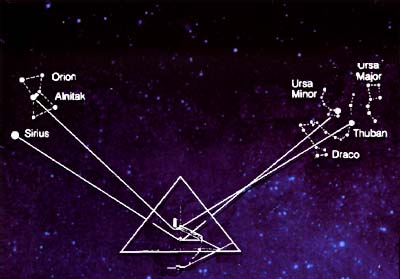

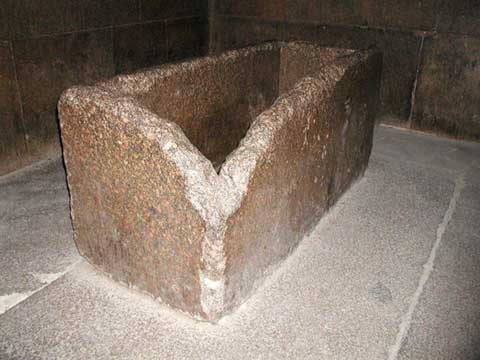










































































































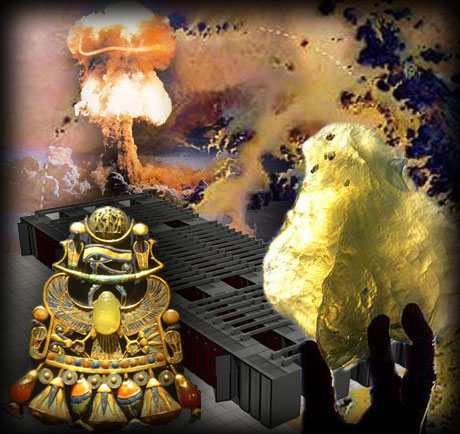





































































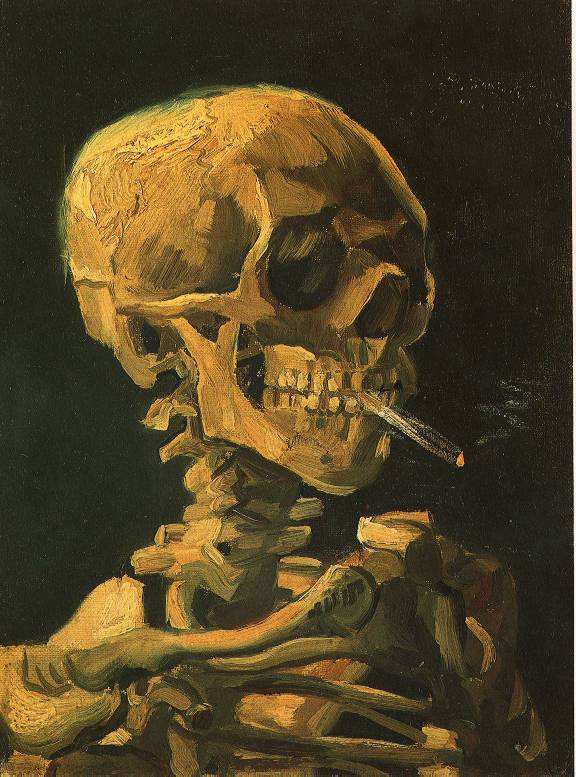





















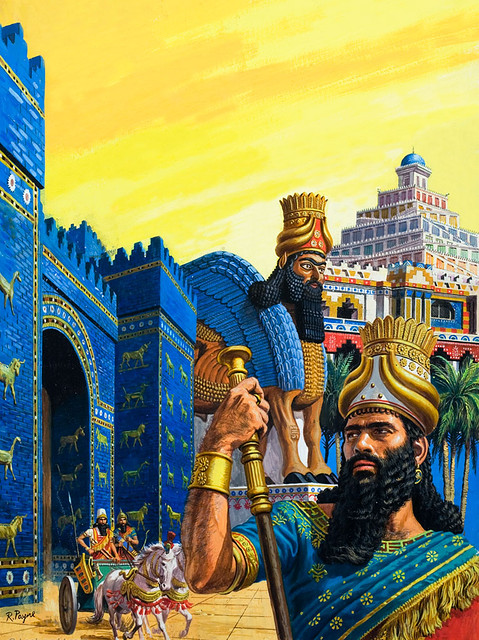





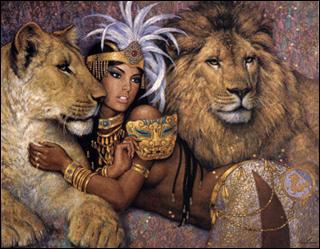




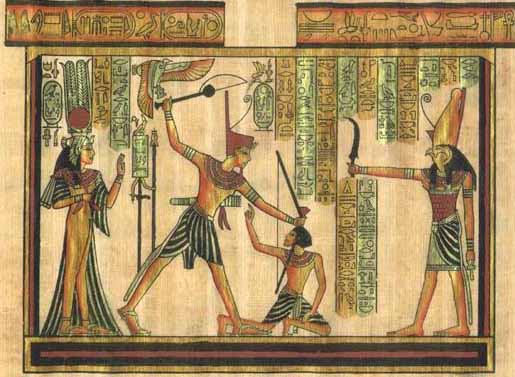
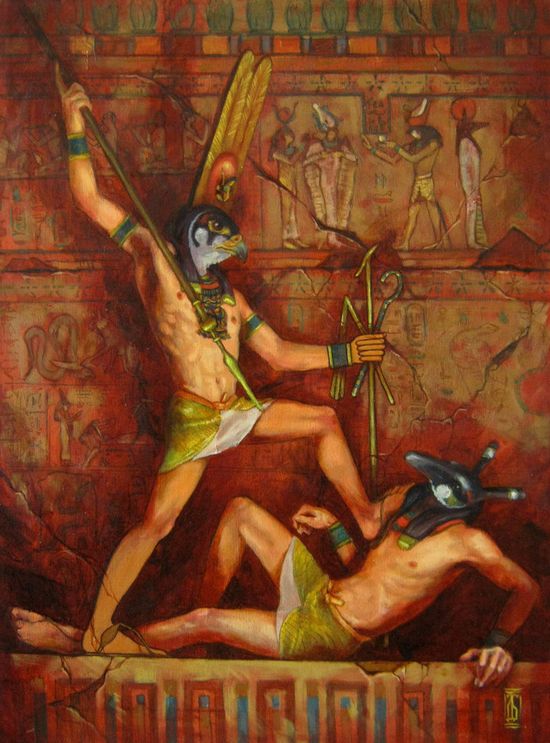


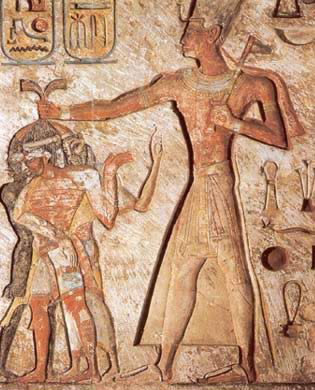


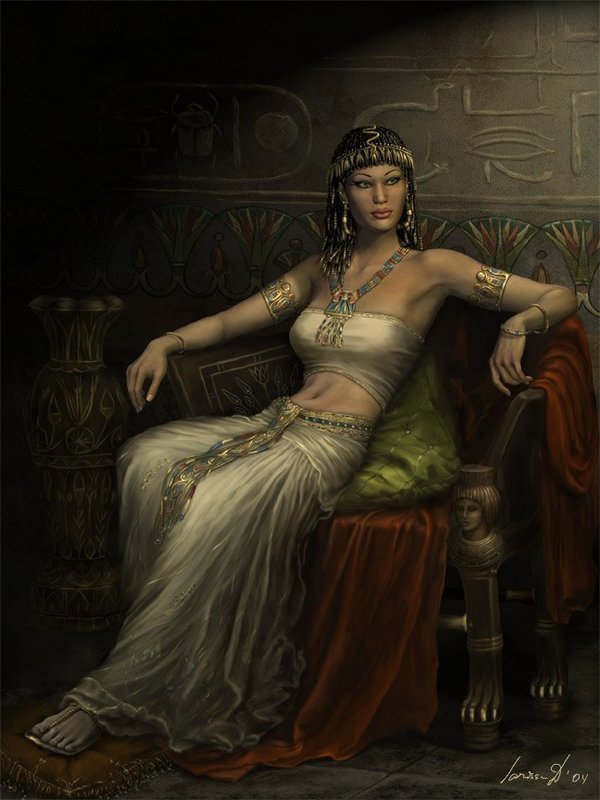
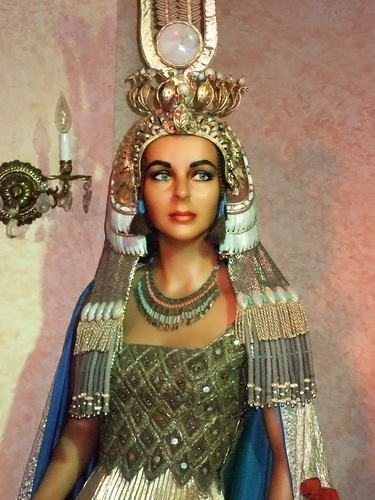
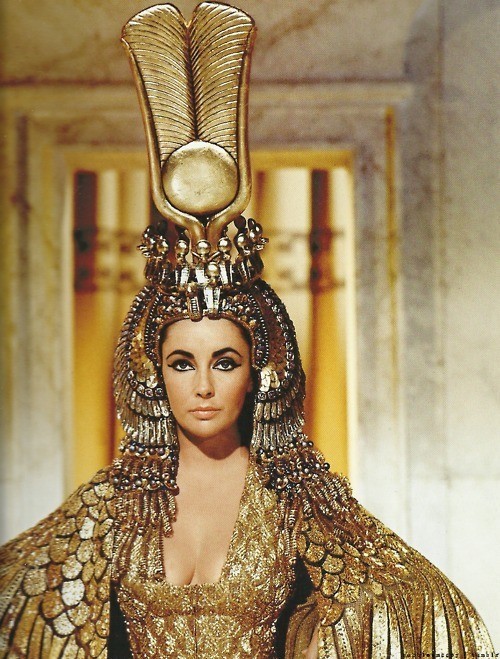
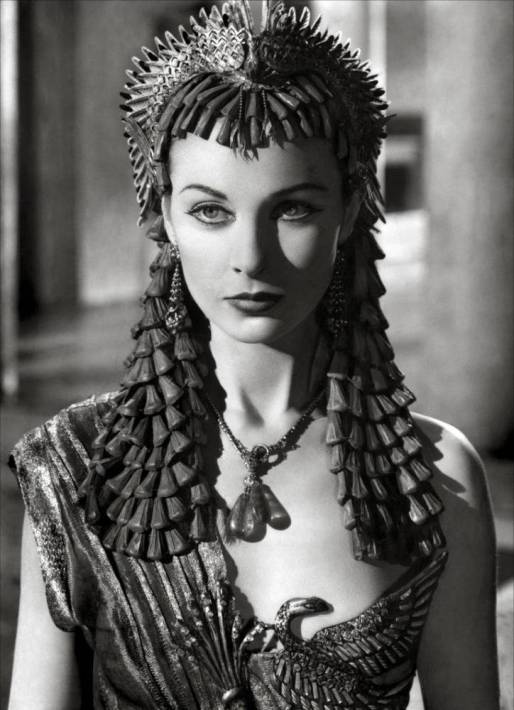









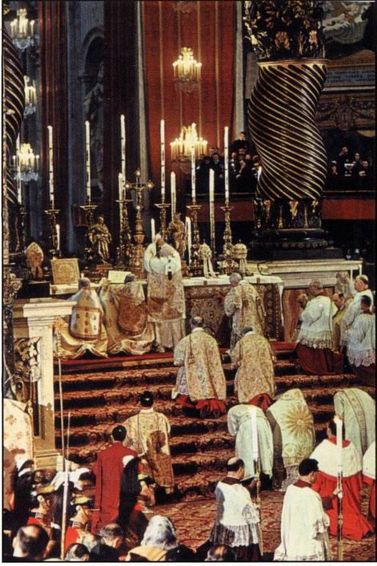





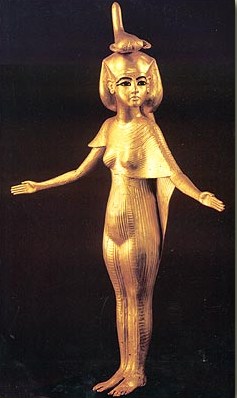
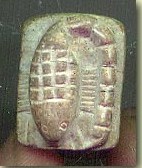
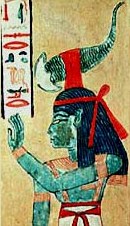













































































 By the way, the picture of Millar's second coming is hysterical.
By the way, the picture of Millar's second coming is hysterical.













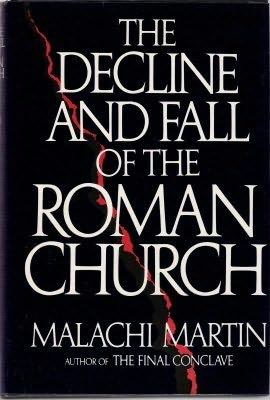



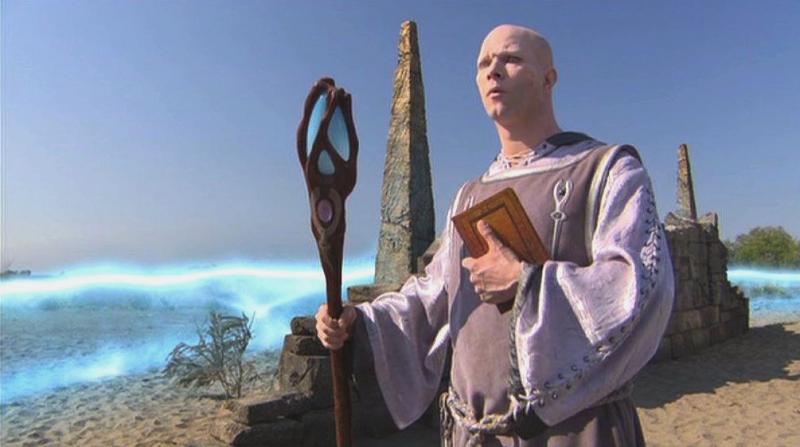



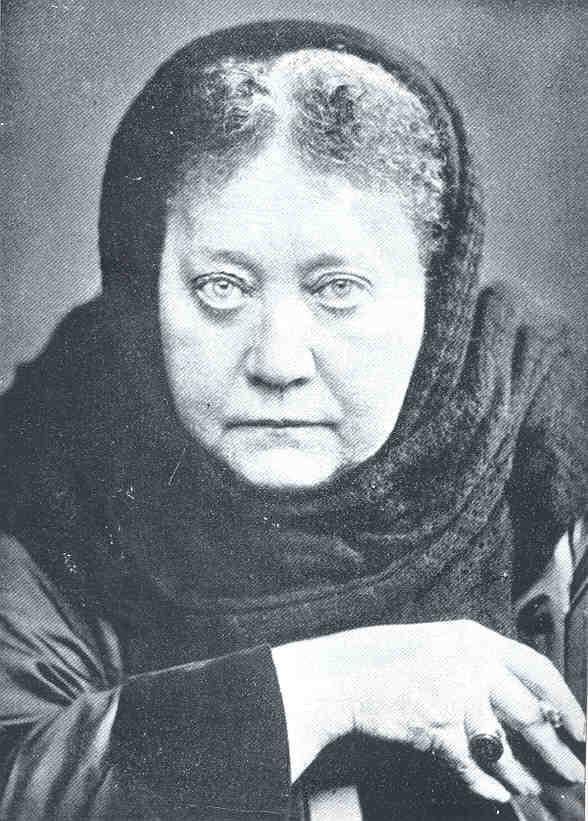




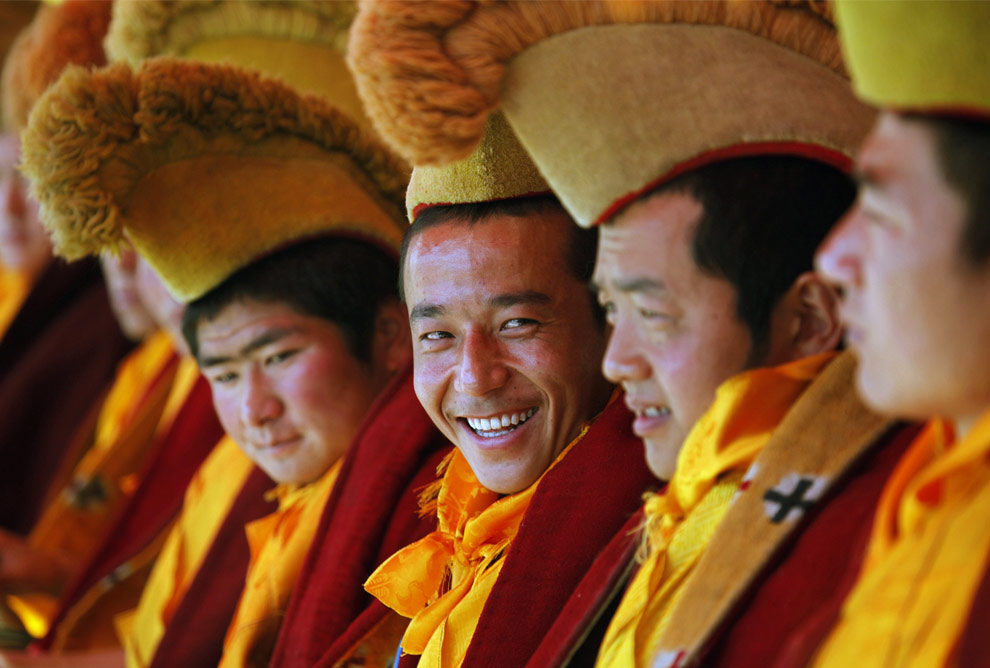

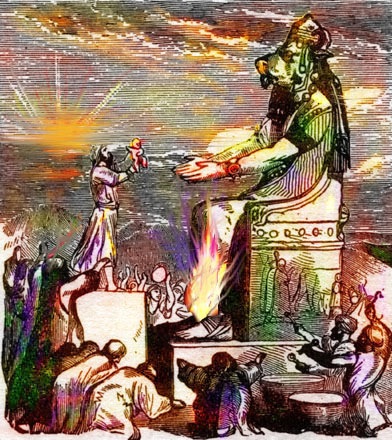













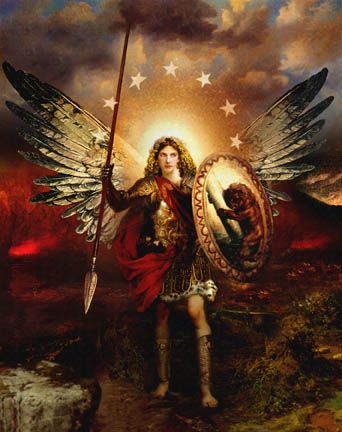























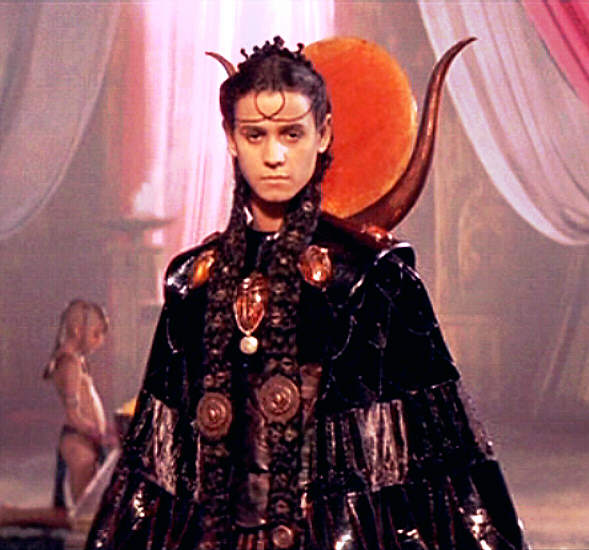























































































.jpg)




